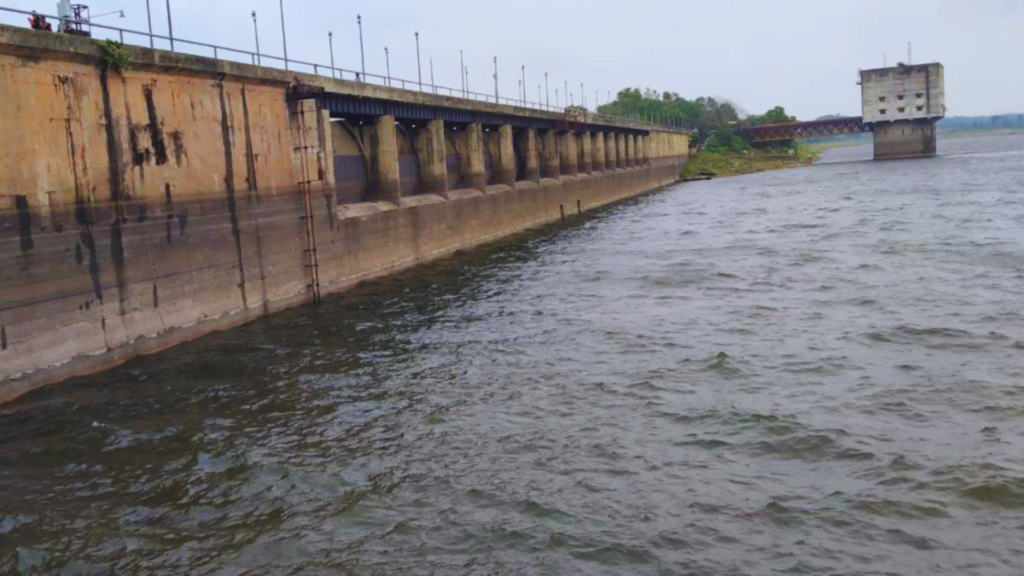Barakar River: Harnessing the Flow
Originating near Padma in Hazaribagh district of Jharkhand it flows for 225 kilometres (140 mi) across the northern part of the Chota Nagpur Plateau, mostly in a west to east direction, before joining the Damodar near Dishergarh in Asansol, Bardhaman district of West Bengal.
Barakar River, a vital tributary of the Damodar River in eastern India, holds historical significance in the region’s landscape. Originating near Padma in Hazaribagh district of Jharkhand, it meanders for 225 kilometers (140 miles) across the northern part of the Chota Nagpur Plateau. Its course predominantly flows from west to east, culminating in its confluence with the Damodar River near Dishergarh in Asansol, Bardhaman district of West Bengal. Covering a vast catchment area of 6,159 square kilometers (2,378 square miles), this river plays a crucial role in the region’s ecosystem.
The Barakar River’s journey takes it past the northern portion of Parasnath Hills, situated at an impressive altitude of 1,350 meters (4,430 feet) above sea level. These hills, located in Giridih district of Jharkhand, are not only a geographical landmark but also a significant center for Jain pilgrimage.
Challenges and Floods
The Barakar River, like many rivers, transforms during the monsoon season, becoming a powerful force of nature. In its upper reaches, it becomes a raging torrent, often causing havoc during heavy rains. Historically, it has even washed away significant infrastructure, including two bridges constructed on the Grand Trunk Road.
One of these bridges, built around 1848 near Barhi in Hazaribagh district, met its demise in 1913 after a torrential downpour of 250 millimeters (10 inches) of rain in just 24 hours. A replacement, an iron bridge, held its own during the Second World War but eventually succumbed to the river’s force in 1946 during another severe flood. The subsequent bridge, constructed in the 1950s, has successfully withstood the river’s fury.
Another essential bridge on the Grand Trunk Road, connecting Barakar in Bardhaman district of West Bengal to Chirkunda in Jharkhand, is showing signs of wear and tear due to heavy traffic in the coal-rich region. To address this issue, a new bridge has been built to the north as part of the ongoing infrastructure development.
Damodar Valley Corporation and Flood Control
The Barakar River’s immense volume during the monsoon season posed a significant flood threat to the lower Damodar basin. To mitigate this risk and harness the river’s potential, the Damodar Valley Corporation (DVC) embarked on India’s first multipurpose river valley project.
The project’s inaugural dam, the Tilaiya Dam, stands proudly across the Barakar River at Tilaiya, formerly in Hazaribagh district of Jharkhand and now in Koderma district. Inaugurated on February 21, 1953, this dam spans 366 meters (1,201 feet) in length and reaches a height of 30.18 meters (99.0 feet) above the riverbed level. The Tilaiya hydel power station, situated on the left bank, is a remarkable concrete structure. It currently boasts two generating units, each with a capacity of 2 MW, with provisions for a future third unit of the same capacity.
Maithon Dam: A Unique Endeavor
DVC’s second significant dam, the Maithon Dam, is situated at the confluence of the Barakar and Damodar rivers in Dhanbad district of Bihar, now Jharkhand. Notably, the dam straddles the boundary between West Bengal and Jharkhand in this region. Inaugurated on September 27, 1957, this colossal dam stretches over 4,860 meters (15,940 feet) and boasts a concrete dam height of 43.89 meters (144.0 feet) above the riverbed.
What sets Maithon apart is its groundbreaking hydel power station, which is situated underground on the left bank of the river, a first-of-its-kind achievement in India. This underground power station has a total generating capacity of 60 MW, featuring three units of 20 MW each. Approximately 13 kilometers (8 miles) downstream from Maithon, the Barakar River converges with the Damodar River at Dishergarh.
Expanding Energy Generation
To bolster hydroelectric power generation, the DVC has diversified into gas turbine and thermal power generation. While most of these facilities are located in the Damodar region, Maithon in the Barakar region plays a pivotal role. The Maithon Gas Turbine Station, commissioned in 1989, boasts an installed capacity of 82.5 MW, featuring three units, each with a capacity of 27.5 MW.
Furthermore, the 2 X 500 MW Maithon Right Bank thermal power station is currently under implementation, representing a joint venture between Tata Power and DVC. Additionally, a proposed 2 X 500 MW greenfield thermal power station in Koderma aims to further enhance energy generation.
Fishing Opportunities
The reservoirs created by the Tilaiya and Maithon dams have paved the way for the development of fisheries. Despite initial efforts to introduce carp, the results have not yet matched the extensive endeavors made in this sector.
The Barakar River, with its rich history and vital role in regional development, continues to flow, offering both challenges and opportunities for the people and authorities working tirelessly to harness its potential.
TELAIYA DAM
Tilaiya Dam was the first of the four multi-purpose dams included in the first phase of the DVC. It was constructed across the BARAKAR RIVER at Tilaiya in koderma district in the of Jharkhand and opened in 1953.

It is the first Dam and hydro -Electric power station constructed by Damodar Valley Corporation across Barakar River, in Koderma district
- Location: Telaiya Dam is situated in the Koderma district of Jharkhand, India.
- First Dam by Damodar Valley Corporation: It holds the distinction of being the first dam and hydro-electric power station constructed by the Damodar Valley Corporation.
- Dimensions: The dam stretches across the Barakar River and measures approximately 1200 feet in length and stands 99 feet tall.
- Flood Control: The primary purpose of constructing Telaiya Dam was flood control in the region, which has been a significant issue.
- Hydro-Electric Power: This dam serves a dual purpose by also generating hydro-electric power, producing 4 megawatts of electricity.
- Scenic Reservoir: Telaiya Dam is surrounded by stunning natural landscapes, and it boasts a beautiful reservoir covering an area of 36 square kilometers.
- Tourist Attraction: The picturesque surroundings, including the reservoir and nearby hills, make Telaiya Dam a popular tourist attraction.
- Access: Visitors can reach Telaiya Dam via the main road from Barhi on the Grand Trunk Road, offering a scenic route through the reservoir and hilly terrain.
Telaiya Dam stands as a testament to both flood control and sustainable energy generation, while its natural beauty continues to draw tourists to the area.














